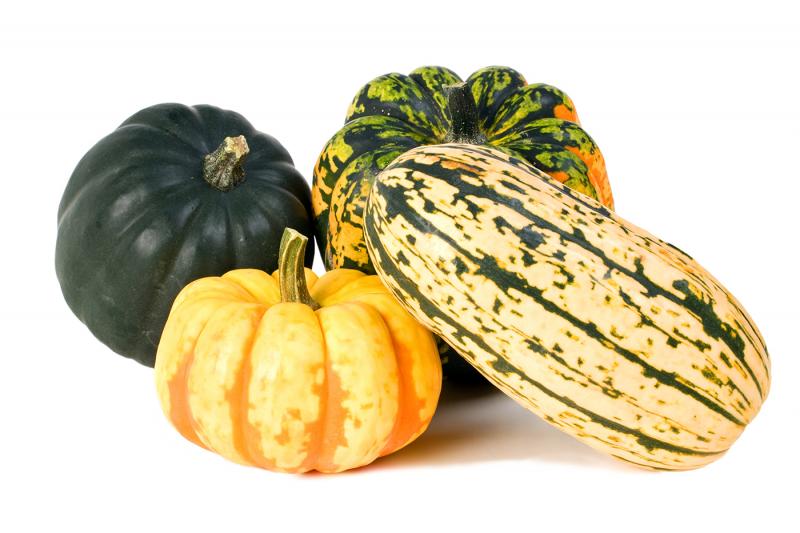Buying things changed in the 1930s when people began to “ring up a purchase” because of the sound of the bell that rings on the cash register. We say something “rings true” because genuine coins have resonant sounds when struck. This is also why something that sounds untrue “rings hollow.”
Since ringing is mostly done with bells, what better way to ring in the autumn than with aptly named Silver Bell squash?
Squash, along with beans and corn, is one of the three plants grown in the traditional Native American garden called the Three Sisters. When grown together, the squash vines act as a ground cover to keep down weeds, and the cornstalks act as climbing poles for the bean plants, which fix nitrogen from the air and release it as a natural fertilizer for all three plants. By saving seeds from smaller, sweeter Blue Banana squash in 1956, Ferry-Morse Seed Co. introduced a small, silver-gray, bell-shaped squash that averages just four pounds. The skin turns a soft pink in storage.
Squashes are related to melons, and the deep-orange flesh of the Silver Bell squash (Cucurbita maxima) is very sweet. Sweetness is measured in Brix, and Sugar Baby watermelons, for instance, have a Brix measurement of 10.2, but the Silver Bell squash is 50% sweeter, with a Brix of 15. This means you can use less sugar when making pies from Silver Bell squash.
Plant Silver Bell squash seeds directly in the garden after all danger of frost is past and the soil is warm. Choose a spot with full sun and deep, rich soil. Add lots of aged compost or aged manure to your garden beds in the autumn before growing squash. The ideal soil pH is 6.0-6.8.
Squash do not like to be transplanted, so if you do start them indoors, it is best to use individual peat pots. Sow 6 to 8 seeds one inch deep in 12-inch-diameter raised beds or hills. Space the hills 4 to 6 feet apart in rows 6 feet apart. The seeds will germinate in about a week. Once the plants have a set of leaves, thin to 3 or 4 plants per hill.
Mulch with straw, grass clippings or leaves to hold in soil moisture and keep weeds down. Water deeply at least 1 inch per week. Do not get water on the leaves and fruit, because dampness can encourage fungus.
Squash flowers only fruit when pollinated by insects such as bees. Don't worry about your Silver Bell squash crossing with pumpkins or other squash, because crossing only affects the seeds, not the fruit.
Be careful of the squash’s shallow roots, which can be easily damaged when weeding or hoeing. Good companion plants include bush beans and nasturtiums.
The squash are ready to pick when the skin is hard to the point that you cannot dent it when pressing your thumbnail into the fruit.
Let the squash ripen completely on the vine, and then give them a quick wipe-down with some weak bleach solution to kill any bacteria on the skins. Store winter squash in a cool, dry, dark place at 50-55F and 50-65% humidity.
Plant Silver Bell winter squash, and you will have squash that is sweeter than watermelons. With Silver Bell, it is a sweet way to ring in the autumn.





















































